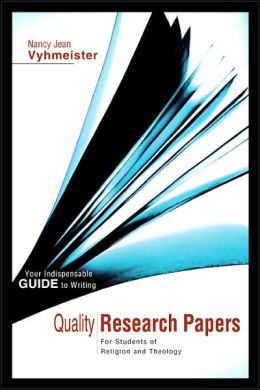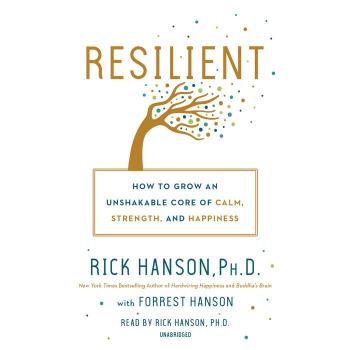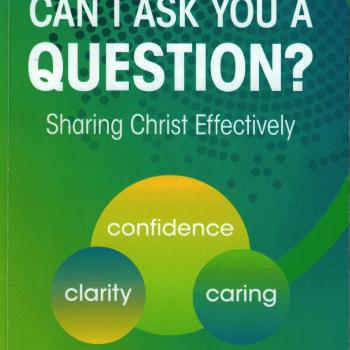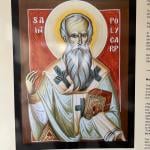I found this book, Quality Research Papers, a very thorough guide to anyone who plans to do research and write reports. The book walks the reader through every step of the research process. The author describes with examples the types of research papers to write.
As a writer, I found the section on finding resources online very helpful. However, since the book was written, there are probably many more websites and online tools available for use. The author does acknowledge that the Internet as a tool is constantly changing. However, there seems to be no discussion about search engines, and their use as an online research tool. I wonder how the author would address a useful tool such as Google. In the age of the Internet, I also wonder if the traditional card catalog is even worth considering in a library. I doubt many younger readers would be familiar with this research tool.
The author spends valuable time to help the potential research writer. The process of choosing a topic was very clear to understand. I had always heard that the topic should be narrow enough to make the report thorough. This author states it in another way. The goal of doing research is to become a specialist in an area. I agree with this assessment. Specialists are experts on a topic. In order to write a research paper well, the writer must be an expert on the topic. Being an expert means that one has evaluated everything that has been written on the topic.
The chapter entitled “Planning Research” was very thorough. Just as good cookbook shows you how to cook a meal, this chapter outlined every single step needed to plan a good research project. I agreed with the sequence of events in planning research. It is a logical, sequential, and useful process.
Planning good research includes documenting resources. The next chapter about “Preparing Bibliographies” takes the writer through the steps and methods of keeping track of the sources of the research. There are different methods described. I am familiar with the bibliographic card approach. As archaic as it seems, it is still probably the best method.
After a person has defined a topic, and has the system ready for recording resources in a bibliography, the author spends time describing the importance of research thinking. The author describes the usefulness of the scientific method of research for theological papers. While I may have known about these ideas, this book set these ideas out on paper. For example, the author uses biblical examples to illustrate research thinking. The mindset of having objectivity, focus and clear presuppositions may be part of the scientific method, but they also apply to theological papers. The author makes good use of biblical examples to illustrate the point.
In the next chapter, “Reading and Evaluating”, the author gives useful suggestions for reading, and then spends time sharing how to evaluate the resource. A list of fifteen questions helps the writer evaluate the resource. The section on note-taking is useful, but it brings up a problem for the researcher in the age of the Internet. There is the struggle between using the standard form of note-taking, and the useful tools on the Internet designed for the same purpose. There are now many websites that can help the writer organize notes and bibliographic citations all in the same place. However, it seems that the research writer would be using two different systems to accomplish the same purpose. While I think that the standard note card idea is archaic and clumsy, I must concur with the author on the methods described.
After spending time finding the resources, and then organizing the notes, a writer needs to organize the sources into bibliographies, as well as use the correct forms for footnotes or endnotes. In the chapter entitled “Reference Notes and Bibliographical Entries”, each type of source is listed, along with the form it takes as a footnote and as a bibliographic note. Unlike printed media, the author suggests that when the writer references electronic media, steps must be taken to “track” the source. For example, a date must be inserted to show when the source was accessed on the Internet. It is also suggested that a hard copy of the article be printed and saved for reference until the dissertation is approved. The fact that a copy must be made is the only disadvantage for using Internet sources.
As the book shifted focus from what to research for the paper, to how to write the paper, I was impressed with the chapter entitled “Writing the Paper.” In the section on the writing process, I concur that there needs to be a first and second draft. However, I find that actually writing on paper is not necessary. I believe a person should learn to write their drafts on the computer. While I realize that literally putting pen to paper helps some people. I find that it wastes time that can be used in research. It is necessary in writing a first draft that the document file should be saved often. A word processor can help the writer with grammatical errors and spelling mistakes.
The chapter entitled “Formatting the Paper” describes a summary of the format used in theological papers. There is also a helpful example of a research paper with the proper formatting. With the use of Microsoft Word, the document can be easily designed to use the “Turabian” format.
The book ends by describing the ways to write a variety of theological research papers. Biblical exegesis, descriptive research, case studies, papers on theological issues in ministry, critical reviews, theses and dissertations, and D.Min. papers are all described in the final chapters of the book. Along with instructions and examples of these types of papers, there is an important chapter on the use of statistics, tables, and graphs. Beyond anything else in the book, these chapters were the most helpful. The D.Min. projects listed as examples of dissertations seem to be limited.
The book provides enormous benefits for the writer of theological papers. This book is helpful supplement to the standard reference for writing theological papers, A Manual for Writers by Kate L. Turabian. The book is well-organized, and filled with helpful examples. The book also answers questions that the writer of theological papers ask, and Turabian does not answer completely.













